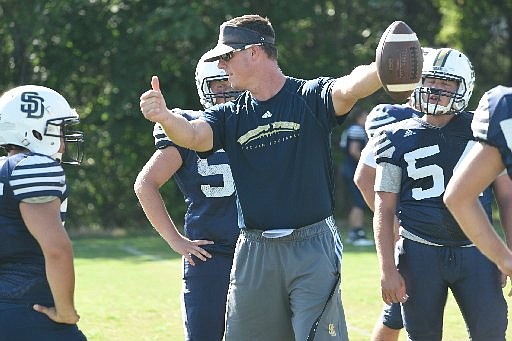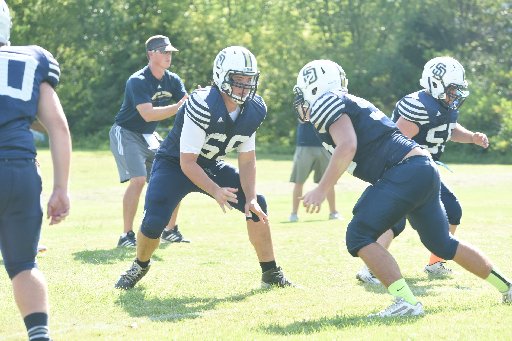Will Healy watches video of hundreds of football players each year.
It's part of his job as the recruiting coordinator at the University of Tennessee at Chattanooga. Some videos go to the waste basket, some into the trash icon on his laptop, and others are saved with meticulous notes attached. Those with notes are players who could eventually become Mocs.
Many of those players, especially the offensive prospects, play for a high school that operates some sort of spread offense or one similar to what Healy and UTC offensive coordinator Jeff Durden and head coach Russ Huesman teach on a daily basis.
"In high schools, they're throwing it more than they ever have," Durden said. "Everyone has receivers and a tight end. What we're looking for is the guy who can split and play tight end, then come back into the box."
The evolution of spread offenses in the high school game has changed the way UTC coaches evaluate high school prospects and determine which players would best fit their offensive system.
When Huesman and Healy began their career at UTC, the offense required a fullback. That's not the case anymore.
"Five years ago, our biggest priority was signing a fullback who could play right away, and we got Taharin Tyson," Healy said. "That was a big-time need for us then. I think we'd like to have a fullback rather than not, but it's not a priority any more."
The UTC offense has evolved from drop-back quarterback B.J. Coleman to Jacob Huesman, who is more fleet afoot. The players backing him up at that position are also quality runners.
When Coach Huesman evaluates quarterbacks, the ability to use them as running backs makes high school prospects even more valuable.
"We're looking at an athletic kid, but first and foremost they have to be able to throw the ball," the coach said. "Then you go, 'How athletic are they?' In an ideal world, you'd like somebody that can really run and really throw the ball.
"For us, the best of both worlds is a guy who can run and throw."
The coach's son, now in his senior season, ranks No. 3 in UTC history with 3,183 career rushing yards.
"We'll continue to recruit that way," Coach Huesman said. "We have two guys in Jacob and (Alejandro Benningfield) who can do both, and really, Tyler (Roberson) is a good athlete too."
While the evolution of the spread in high schools has changed the way UTC evaluates a few players, the offensive system still plants the best high school players in the area on college teams, regardless of the system.
"If you're good enough, they're going to find you," Polk County coach Derrick Davis said. "The thing is that most colleges don't have a traditional fullback anymore. They're looking for more speed guys."
Speed guys don't grow on trees in Wildcat country. But former Polk County fullback Zach Miller earned a scholarship at Carson-Newman.
"Colleges are still looking for guys that have motors and guys who are physical up front," Soddy-Daisy coach Justin Barnes said. "And everybody needs playmakers, so they're looking for those guys too."
McMinn Central coach Josh Goodin has sent 10 of his former players on to college programs. As a former offensive lineman for UTC with connections to that program and other schools, he knows a thing or two about recruiting.
He'll come across at least one recruiter every week of the season evaluating how players perform in his version of the spread offense.
"The high priority is the raw athleticism that college coaches can work with," Goodin said. "I think one direct result of the spread is thinner offensive linemen like Oregon has, guys who can run.
"There aren't many fat boys in college anymore."
Contact David Uchiyama at duchiyama@timesfreepress.com or 423-757-6484. Follow him at Twitter.com/UchiyamaCTFP.

